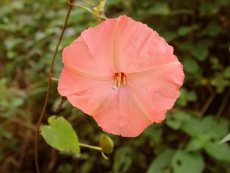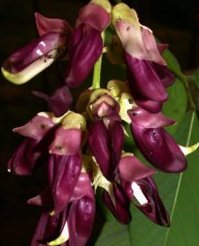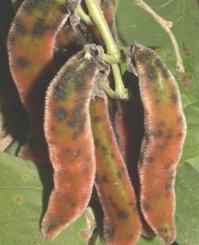 |
QUICK SEARCH
MO PROJECTS:
Africa
Asia/Pacific
Mesoamerica
North America
South America
General Taxonomy
Photo Essays
Training in Latin
America
MO RESEARCH:
Wm. L. Brown Center
Bryology
GIS
Graduate Studies
Research Experiences
for Undergraduates
Imaging Lab
Library
MBG Press
Publications
Climate Change
Catalog Fossil Plants
MO DATABASES:
W³MOST
Image Index
Rare Books
Angiosperm
Phylogeny
Res Botanica
All Databases
INFORMATION:
What's New?
People at MO
Visitor's Guide
Herbarium
Jobs & Fellowships
Symposium
Research Links
Site Map
Search
|
Draft Treatments | Guidelines | Checklist | Citing | Editors The Cutting EdgeVolume XIII, Number 1, January 2006News and Notes | Leaps and Bounds | Germane Literature | Season's Pick | Annotate your copy SEASON'S PICKS: Operculina pteripes (G. Don) O' Donell (Convolvulaceae) AND Stizolobium pruriens (L.) Medik (Fabaceae/Faboideae), are totally unrelated of course, but both are vines and very typical of the Costa Rican "spring" flora.
Operculina pteripes is a species we have never seen cultivated, but for its large, famously papaya or salmon pink colored flowers, surely ought to be. This fine example was collected and photographed at El Rodeo by Ricardo Kriebel (Kriebel 4952).
Stizolobium pruriens fruits have a very bad reputation in Costa Rica as a sort of biological weapon. When the fruits are fully ripe, their short stiff (and highly irritating) hairs apparently fall off easily and can waft about in breezes causing all sorts of havoc. Reportedly, bags of them have been deployed locally in confrontations between protestors and authorities, as well as (bad) jokes at country dances. Fortunately, when we photographed and collected this specimen (Hammel & Pérez 23951) between Mal País and Cóbano, the enticingly furry fruits were not quite ripe. The extravagantly colored flowers had a strong and very unusual fragrance, right at dusk. It was not at all sweet, but not disagreeable either; we debated its description, and settled for several, Spanish omelet, smoked, canned sardines, and wet rust among them! One other label at INB describes the fragrance as that of beans with garlic. Those pollinators must be heavy eaters!
|
© 1995-2025 Missouri Botanical Garden, All Rights Reserved
4344 Shaw Blvd.
St. Louis, MO 63110
(314) 577-5100
Technical Support

_small.jpg)

